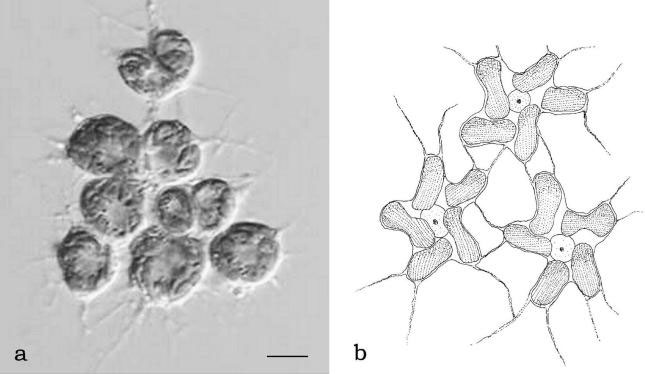Chlorarachniophyta
They are naked, uninucleate cells that form a net-like plasmodium via filopodia (Figure 1.40). The
basic life cycle of these algae comprises ameboid, coccoid, and flagellate cell stages. The ovoid zoospores bear a single flagellum that during swimming wraps around the cell. Chlorarachniophytes
are marine. They posses chlorophylls
a and
b. Each chloroplast has a prominent projecting
pyrenoid and is surrounded by four-membrane envelope. Thylakoids are grouped in stacks of one to
three. A nucleomorph is present between the second and third membranes of the chloroplast envelope.
The origin of this organelle is different from the origin of the cryptophytes nucleomorph,
because the chlorarachniophytes originated from a green algal endosymbiont. Paramylon (β-1,3-
glucan) is the storage carbohydrate. They are phototrophic and phagotrophic engulfing bacteria, flagellates,
and eukaryotic algae. Asexual reproduction is carried out by either normal mitotic cell division
or zoospore formation. Sexual reproduction characterized by heterogamy has been reported
for only two species.

FIGURE 1.40 Plasmodial reticulum of Chlorarachnion, bright field microscope image (a) and schematic drawing (b). (Bar: 4 µm.)